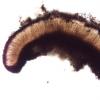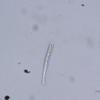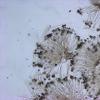
15-12-2025 07:09
 Danny Newman
Danny Newman
indet. Rutstroemiaceae sp. on unk. fallen leavesMc

18-12-2025 21:17
Pol DebaenstThe identification took me to Byssonectria deformi

19-12-2025 10:10
Patrice TANCHAUDBonjour, récolte réalisée en milieu dunaire, a

18-12-2025 17:23
 Bruno Coué
Bruno Coué
Bonjour,je serais heureux d'avoir votre avis sur c

18-12-2025 18:07
Margot en Geert VullingsThese plumes were found on rotten wood.They strong

17-12-2025 18:35
 Michel Hairaud
Michel Hairaud
Bonjour à tous/Hi to everyone I am passing along

15-12-2025 15:48
 Danny Newman
Danny Newman
Melanospora cf. lagenaria on old, rotting, fallen

15-12-2025 15:54
 Johan Boonefaes
Johan Boonefaes
Unknown anamorph found on the ground in coastal sa

15-12-2025 21:11
 Hardware Tony
Hardware Tony
Small clavate hairs, negative croziers and IKI bb
Hello Forum:
Attached are some photos from dried material collected Aug 21/12 in New Brunswick, Canada. The substrate is decorticated wood partially submerged in a small puddle adjacent to a stream.
The ascomata are black (fresh and dried), non-stipitate, .25-.75mm dia. The excipulum appears to be composed of circular cells with small cellular protruberences.
The asci are 40-50x4-5u, iodine negative in Lugol's solution, with a rather thickened apical regiion.
Ascospores are 3x2u, hyaline, aseptate and slightly clavate.
Paraphyses are same length as asci but with a swollen (knob-like) apex that is partially covered with a black exudate (possibly internal).
Your help would be much appreciated.
Thank you,
Adrian Carter
It seems s

as you already found out by yourself using my DVD, this collection could well be Patinella hyalophaea, a species that I studied from the Saccardo type from Italy, and which might never have been recollected. Looking forward to study it, then we will see if it fits. The spores you have given are quite small, but not too far from the type.
The genus was thought by Nannfeldt to belong in the Orbiliaceae, but Spooner placed it in the Helotiales, what I also believe.
Zotto
Thank you for your help behind the scenes and access to your DVD. Both proved invaluable. I will send you some material as soon as possible.
Thank you, also, to Bjorn Wergen who helped format my original BMP photos to JPG format.
I learn something everyday from the Ascofrance website.
Best regards,
Adrian Carter
THIS IS AN UPDATE (APRIL 29/13). It should be noted that the original posting on Ascofrance
indicated a submerged wood habitat. This was incorrect. The correct habitat is "decorticated coniferous wood found on wet soil adjacent to a small stream".




